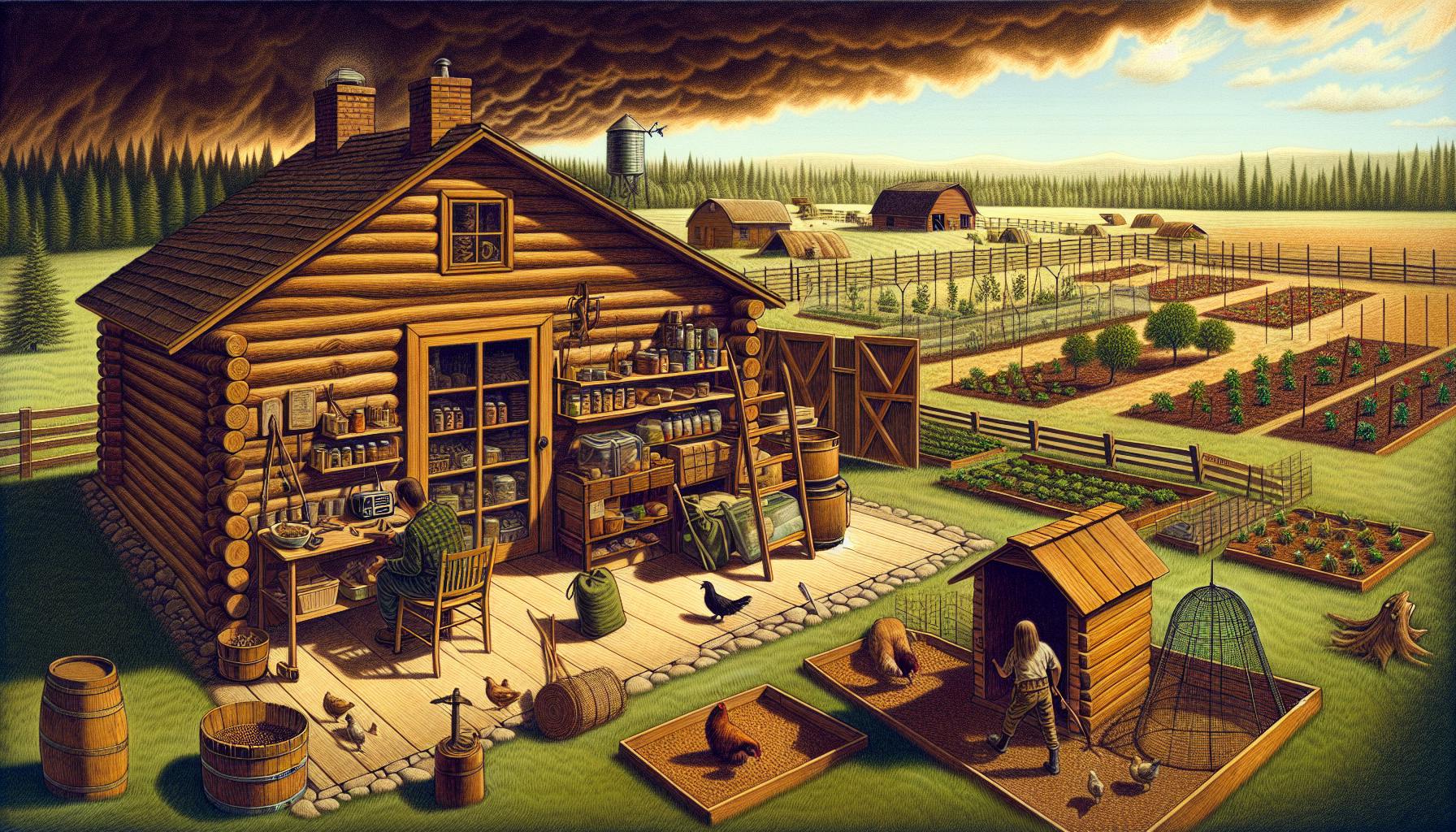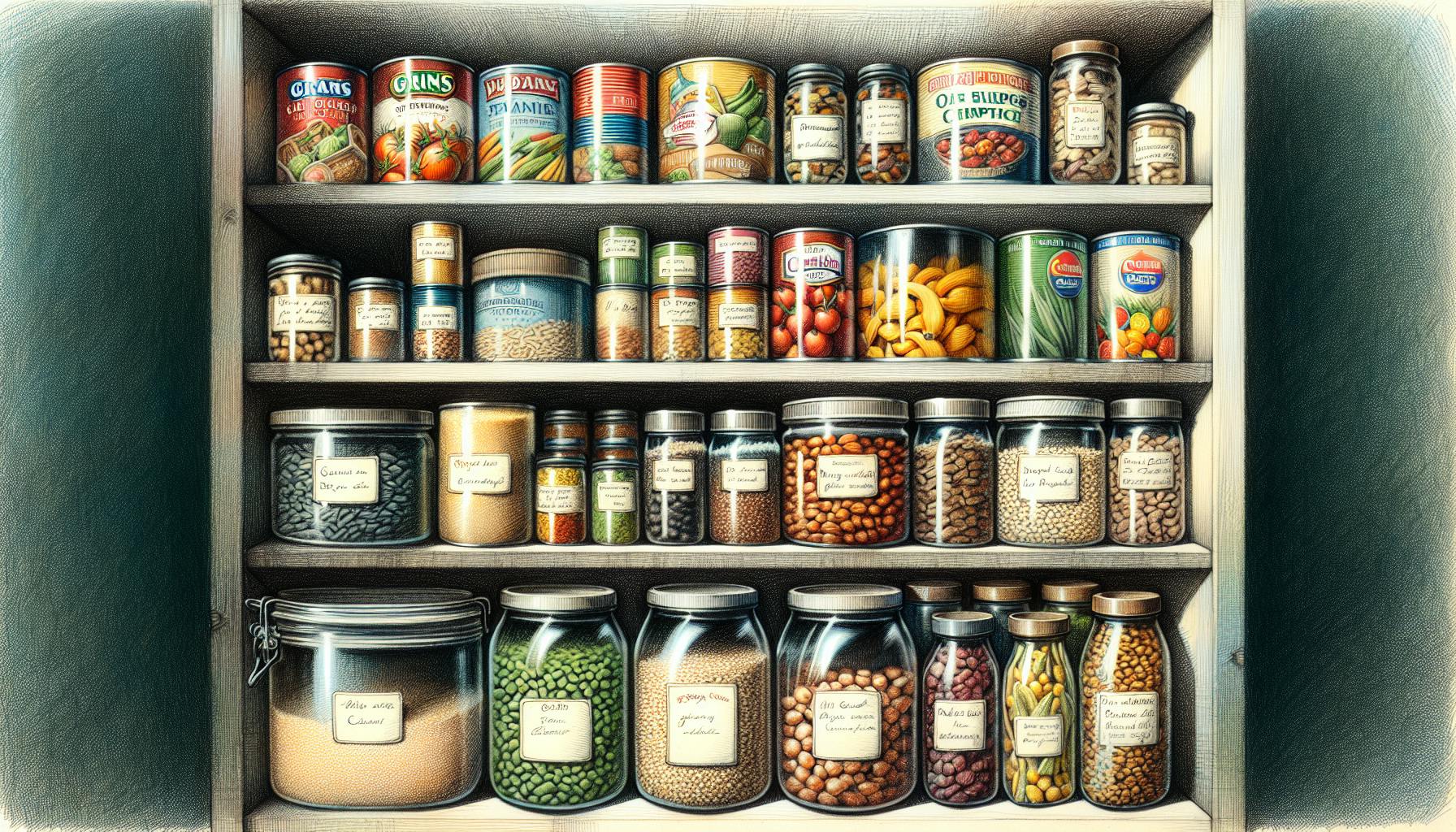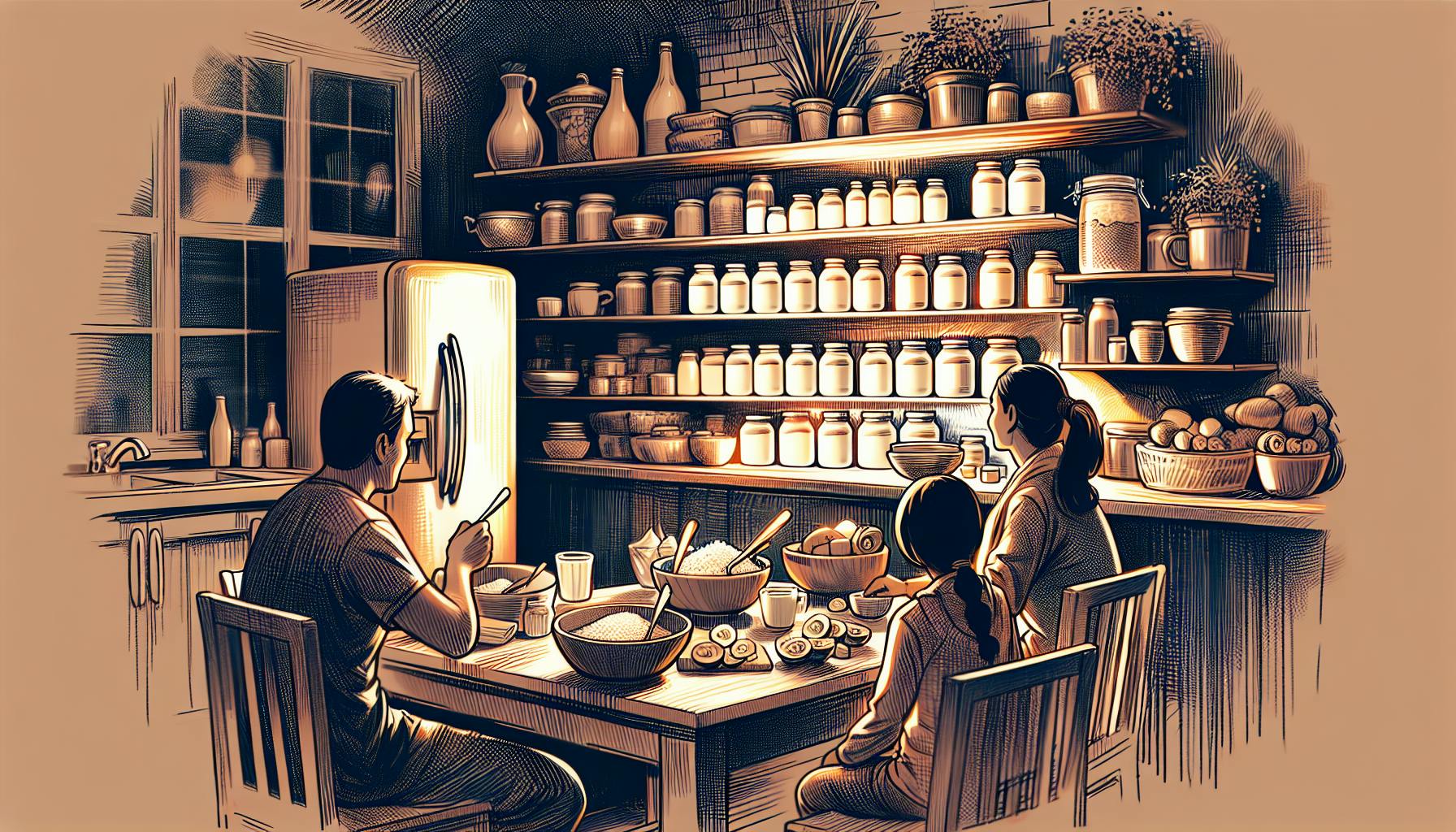Introduction to Home Survival Food Lists
Being prepared with a well-stocked pantry is crucial for emergency readiness. Having supplies of non-perishable foods on hand provides security and reduces stress when facing disasters or grid-down situations. A survival food supply should contain a balanced mix of shelf-stable items that meet your household's nutritional needs. When building your stockpile, focus on calories, nutritional density, shelf life, and choosing foods you already eat. Websites like WeLovePrepping.com provide useful information on prepping and stocking a survival pantry. A layered pantry starts with long-term basics like grains and beans, adds canned staples for variety, and includes morale-boosting comfort foods. Proper planning, storage, and rotation helps ensure your home food reserve stays fresh and avoids waste.
Category 1: Staple Grains and Starches
Stock up on grains and starches like rice, pasta, oats, wheat berries, quinoa, crackers, and cereal. These inexpensive pantry basics keep almost indefinitely and provide carbohydrates for energy. Consider stocking multiple varieties of rice and pasta.
- Rice - white, brown, long-grain, basmati, jasmine
- Pasta - spaghetti, macaroni, egg noodles, lasagna, rotini
- Oats - old fashioned, quick oats, steel-cut oats
- Wheat berries
- Quinoa
- Crackers - saltines, Triscuits, Ritz
- Cereals - Cheerios, granola, muesli
Category 2: Canned and Jarred Fruits and Vegetables
Having canned produce provides vital nutrients and variety. Focus on fruits packed in juice rather than syrup, and low-sodium vegetables. Soups, tomatoes, beans, and jarred baby food also store well long-term.
- Canned beans - kidney, black, pinto, chickpeas, refried
- Canned tomatoes, pasta sauce, salsa
- Canned fruits - peaches, pears, pineapple, mandarin oranges
- Pickled vegetables - olives, peppers, carrots
- Canned soups, stews, chili
- Jarred baby food
- High quality brands like Eden Foods organic beans and Muir Glen organic tomato sauce
Category 3: Canned and Dried Proteins
Protein foods provide essential amino acids for building muscle and energy. Stock up on canned fish, meat, jerky, dried beans, nuts, nut butters, and protein powders.
- Canned tuna, salmon, chicken, turkey, ham
- Vienna sausages
- Canned corned beef hash
- Beef and turkey jerky
- Dried beans - kidney, pinto, black, lentils
- Peanut butter and other nut butters
- Nuts and trail mixes
- Protein powders - whey, plant-based
Category 4: Fats and Oils
Fats provide concentrated calories and enhance the absorption of fat-soluble vitamins. Shelf-stable options include oils, shortening, nut butters, and condiments.
- Olive oil, coconut oil, vegetable oil
- Shortening
- Lard
- Peanut butter and other nut butters
- Mayonnaise
- Bacon fat
Category 5: Baking Needs
Having basic baking ingredients allows you to prepare homemade breads, desserts, and more. Stock up on all-purpose flour, leaveners, sweeteners, spices, extracts, and chocolate chips.
- All-purpose flour, whole wheat flour
- White sugar, brown sugar, powdered sugar
- Baking soda, baking powder, yeast
- Salt
- Vanilla extract, almond extract
- Cocoa powder, chocolate chips
- Honey, maple syrup
- Cinnamon, nutmeg, allspice
Key Factors for Stocking Your Survival Pantry
When building your food reserves, focus on nutritional balance, calculating proper calorie needs, maximizing shelf life, food safety, and accommodating special dietary requirements.
Nutrition
Strive for well-rounded nutrition including fruits, veggies, lean proteins, and healthy fats. Comfort foods also boost morale.
- Include canned and jarred produce for vitamins
- Stock lean proteins like canned fish, chicken, and jerky
- Incorporate oils, nut butters, and condiments
- Add sweets, snacks, coffee for morale and normalcy
Calorie Needs
Calculate and stockpile enough calories for each person's age, gender, and activity level.
- Adults need 2,000 - 2,500 calories minimum per day
- Active teens require 2,000 - 2,400 calories daily
- Young children need 1,200 - 2,000 calories depending on age
- Multiply individual needs by number of people and days
Shelf Life
Maximize longevity by choosing foods with 1-2+ year shelf lives stored properly. Rice and oats can last 30 years or more if kept cool and dry. Follow first-in-first-out rotation.
- Look for expiration dates over 1 year in the future
- Store in cool, dark place to prevent spoilage
- Practice FIFO system when restocking
- Check dates and inspect packaging regularly
- Many staples like rice, beans, honey last indefinitely
Food Safety
Practice safe home canning, inspect cans carefully, watch for spoilage, sanitize prep areas, and cook to proper temperatures.
- Use approved canning methods for preserving food
- Discard bulging, leaking, or heavily rusted cans
- Toss items if smell, color, texture seems off
- Have a food thermometer to check cooking temps
- Maintain strict kitchen hygiene
Special Dietary Needs
Accommodate food allergies, intolerances, baby formula needs, cultural preferences, religious restrictions, and health conditions.
- Check labels for food allergen information
- Stock gluten-free, dairy-free, vegan options as needed
- Include infant formula and jarred baby foods if required
- Incorporate cultural staples into your stockpile
- Respect dietary restrictions based on faith or ethics
- Address any specific medical nutrition needs
Tips for Storing Your Survival Food Supply
Proper storage using food-grade containers, temperature control, shelving, pest prevention, and rotation helps your food reserves last.
Pantry Organization
Group similar items together and arrange so oldest food is most accessible. Label clearly.
- Organize by food type - grains, canned goods, etc.
- Position oldest items in front to take first
- Put everyday use items in easy-access spots
- Use clear labels and markers to identify contents
- Allow air circulation between shelves and walls
Monitoring and Maintenance
Inspect packaging and track expiration dates every 6 months. Watch for signs of pests.
- Take stock of inventory and watch for nearing dates
- Check cans and containers for damage during inspections
- Immediately throw out anything leaking, bulging or rusted
- Clean up spills right away to deny pests
- Look for droppings, chew marks, insect evidence
- Place glue traps and pheromone lures as precautions
Emergency Access Considerations
Stash some food and water upstairs or in go-bags. Ensure shelving is securely anchored. Have emergency lighting available.
- Pack portable food supplies in evacuation go-bags
- Keep extra provisions near your shelter zone
- Position some easy meals on upper floor for fast access
- Install emergency lighting in case of power outages
- Use wall anchors appropriate for shelf load and type
Climate Control
Ideal storage is 50°F - 70°F with a relative humidity around 40%. Use ACs, dehumidifiers, or cool basements as needed.
- Use ACs or dehumidifiers to regulate moisture
- Store in naturally cool area like a basement if available
- Avoid places prone to extreme cold or heat
- Check temps with thermometers, adjusting as needed
- Maintain climate suitable for your geographical area
Pest Prevention
Seal food tightly, remove spills immediately, and inspect regularly for any signs of bugs or rodents. Use traps and natural deterrents.
- Use airtight containers, not paper or plastic bags
- Clean up spilled food right away to deny pests
- Look for droppings, chew marks, insect evidence
- Place glue traps and pheromone lures as needed
- Seal exterior gaps where pests can gain entry
Building a Layered Food Pantry for Emergencies
Structure your survival pantry with basics like grains and beans, add canned staples for variety, and include morale-boosting comfort foods. Tailor your stockpile to your family's needs and tastes.
Layer 1: Long-Term Basics
Focus initially on nutritious, inexpensive, long-lasting items like grains, legumes, powdered milk, and dried eggs.
- Rice, beans, oats, wheat berries, pasta - high calories
- Freeze-dried potatoes, TVP, nutritional yeast
- Cooking oil, honey, salt, spices
- Powdered milk, powdered eggs
- Multivitamins
Layer 2: Canned and Preserved Foods
Add canned and jarred items like meat, fruits, vegetables, and prepared meals for more variety and flavors.
- Canned chicken, tuna, salmon, turkey chili
- Fruits and vegetables - carrots, green beans, peaches
- Sauces and condiments - tomato sauce, mayo, mustard
- Canned soup, stews, hash
- Canned nuts and nut butters
Layer 3: Comfort Foods
Boost morale with familiar snacks, sweets, juices, and instant coffees or teas.
- Snack foods - popcorn, pretzels, chips, jerky
- Chocolates, hard candies, Jell-O, pudding
- Coffee, tea bags, powdered creamer
- Shelf-stable milk, juice boxes
- Freeze-dried and dehydrated meal pouches
Customizing for Your Family
Tailor your stockpile to your family's regular diets, tastes, and dietary needs.
- Include the foods you normally eat
- Meet any allergy, intolerance, or religious food needs
- Stock culturally-appropriate staples
- Have necessary baby foods, infant formula
- Accommodate medical conditions
Stocking Up Gradually Over Time
Build your supply over months and years as budget allows. Aim for at least a 30-day supply, with 3-12 months ideal if possible.
- Buy extra each grocery trip to build reserves
- Take advantage of sales, bulk discounts
- Set a goal of 30 days initially, then increase
- Rotate stock using FIFO system
- Re-evaluate needs as family situation evolves
Key Takeaways for Your Survival Stockpile
Having at least a 30-day supply of shelf-stable food tailored to your family provides security during emergencies. Focus on nutritional basics, canned staples, and morale-boosting comfort foods. Proper planning, storage, rotation, and pest control keeps your survival pantry fresh and ready for use. Gradually build your layered food reserves over time as budget allows.


